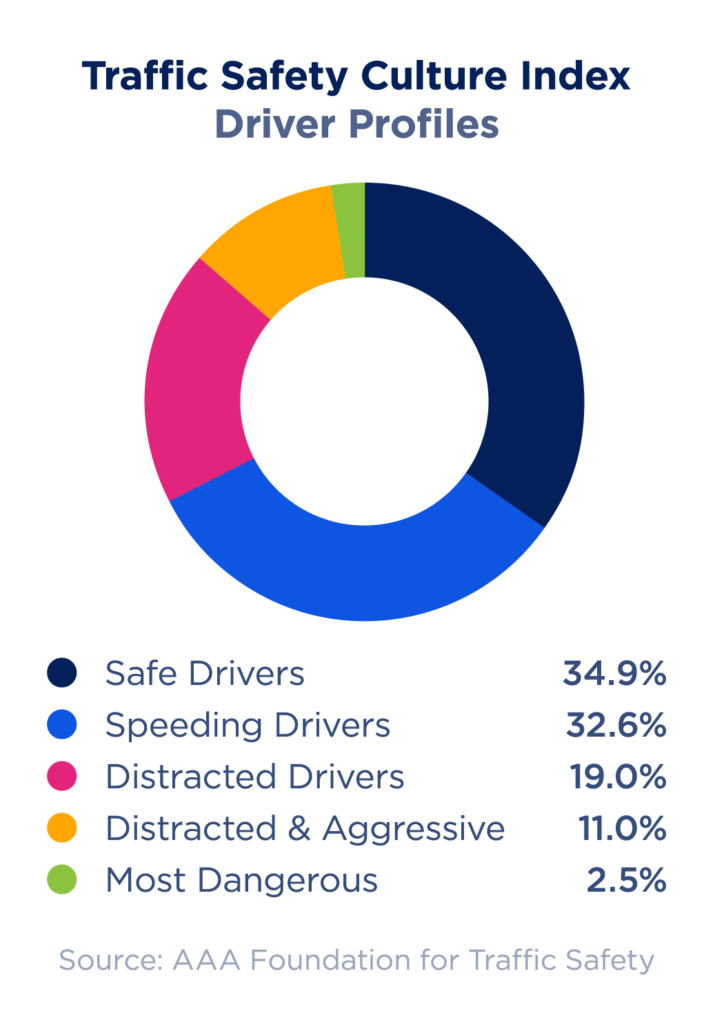BOISE – Last year, nearly 41,000 lives were lost on U.S. roadways, and according to new research by AAA, risky driving continues to be a major cause for concern.
The AAA Foundation for Traffic Safety’s annual Traffic Safety Culture Index compares driver attitudes with their self-reported actions behind the wheel. Shockingly, just 35% of respondents qualify as “Safe Drivers”, while most drivers make dangerous decisions on a regular basis.

“Driving is all about reaching your destination safely, but because it’s part of the routine, competing priorities can steal our focus away from what matters most,” says AAA Idaho public affairs director Matthew Conde. “To get back on track, we need to raise awareness and pursue meaningful change.”
AAA urges drivers to travel at safe speeds, ditch the distractions, and avoid aggressive maneuvers.
Aggressive driving
- 89% of drivers view aggressive driving (including speeding, sudden lane changes, and tailgating) as dangerous. 81% perceive running red lights as dangerous.
- 94.7% believe friends and loved ones would not approve of tailgating and sudden lane changes; interestingly, just 76.8% felt that loved ones would disapprove of speeding 15 MPH or more on the freeway.
- 49% admitted to driving 15 MPH over the speed limit on a freeway at least once in the past 30 days. 27% admitted to running at least one red light where they could have stopped.
According to the Idaho Transportation Department, there were nearly 14,000 aggressive driving crashes in Idaho last year (50% of all crashes), with 103 deaths and 577 serious injuries.
Distracted driving
- 93% of drivers believe texting, emailing, and reading while driving is dangerous.
- However, 27% reported sending a text or email, and 37% reported reading one.
ITD reports that there were more than 4,750 distracted driving crashes in the Gem State last year (17% of all crashes), including 48 deaths and 229 serious injuries.
“Distraction can take many forms, including food, grooming, entering GPS coordinates, or using a phone,” Conde said. “Please exercise good judgment. Delay activities that could distract you, including emotionally charged conversations. Delegate navigation and communication to a passenger so you can actively scan the road for other vehicles, bicyclists, and pedestrians.”
Drowsy driving
- 96% of drivers recognize the dangers of drowsy driving.
- 20% admitted to driving when they were so tired that they had a hard time keeping their eyes open at least once in the previous 30 days.
According to ITD, drowsy driving contributed to 4% of all single-vehicle crashes in Idaho last year.
AAA recommends getting seven hours of sleep each day. Switch drivers or take a break at the first sign of fatigue, including dangerous “microsleeps”. Cold air, the radio, singing, and even caffeine aren’t effective substitutes for adequate rest.
Impaired driving
- 95% of drivers view drunk driving as dangerous and socially unacceptable.
- Just 88% felt the same way about potentially impairing prescription medications.
- 7% drove after drinking enough alcohol to possibly be over the legal limit at least once in the previous 30 days. 4% drove while using potentially impairing prescription drugs.
ITD reports that there were 1,700 impaired driving crashes last year, with 105 deaths and nearly 250 serious injuries.
Seat belt use
- Just 76% of drivers view driving without wearing a seat belt as dangerous, despite 97% believing that doing so is socially unacceptable.
- 12.5% admitted to driving without a seat belt at least once in the previous 30 days.
ITD reports that 103 of the 178 passenger vehicle occupants who were killed in crashes last year were not wearing their seat belt. Had everyone done so, 43 additional lives may have been saved.
“It’s important to realize that when these crashes occur, it’s not just about life and death. It’s also about a lesser quality of life for those who survive a crash, medical bills, insurance claims, and property damage – all things we would like to avoid,” Conde said. “The most neighborly thing you can do behind the wheel is to be safety-minded, while risky behavior is pretty selfish at its core.”
This year, the AAA Foundation’s research grouped respondents into five distinct driving profiles:
- Safe Drivers who rarely engage in dangerous behaviors – 34.9%
- Distracted Drivers who mainly participate in distracting activities – 19%
- Speeding Drivers who primarily engage in speeding and aggressive driving – 32.6%
- Distracted and Aggressive Drivers – 11%
- Most Dangerous Drivers who engage in all risky driving behaviors – 2.5%
Safe Drivers were more likely to be aged 60-74, female, and who drove 0-2 days per week. Speeding Drivers were more likely to be 40-59 years old, male, and married with children at home. The Most Dangerous Drivers were more likely to be aged 16-18, male, and single.
Intuitively, Safe Drivers were more likely to perceive risky driving as dangerous and socially unacceptable than their counterparts.
“As we work to change the narrative about dangerous driving behaviors and their serious consequences, please remember to buckle up,” Conde said. “Humans make mistakes, and even accomplished drivers face adverse weather conditions, wildlife, and the actions of other road users. Please be careful out there – everyone deserves to make it home at the end of the day.”

